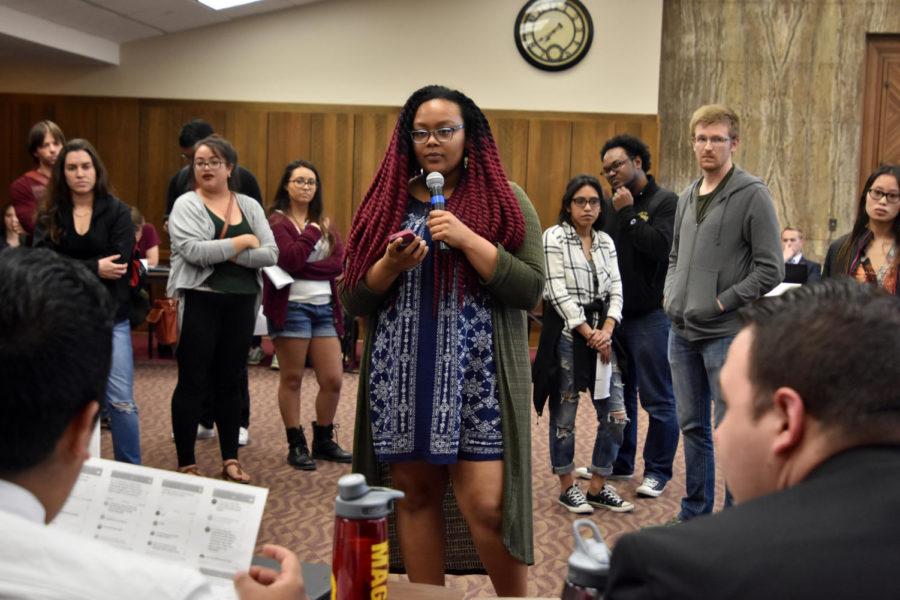Salo: Diversity on campus
Joi Latson, sophomore in global resource systems, asks senators to respond to offensive Yik-Yak comments regarding diversity and inclusion at Iowa State at the first Student Government meeting of the new cabinet on April 13.
August 28, 2017
Last week, The New York Times published an article that reviews how different races are represented at top colleges. They also look at how many college-aged people of each race are actually going to college.
They found that although the white and Asian college populations are growing, blacks and Hispanics are both dropping.
Over the last two years at Iowa State, enrollment rates of all races have grown at relatively the same speed, but non-white students are still underrepresented on campus. Data from last school year shows that only 12 percent of students are not white on Iowa State’s campus.
The skew in diversity isn’t surprising however, considering that 91 percent of Iowa residents are white. It is still important for our state, community and campus to be welcoming to people of other races and to strive for a more diverse surrounding, but compared to the rest of the country, Iowa State is sitting pretty good.
However it’s important for all college campuses, no matter where they are located geographically, to be diverse. Just because we are comparable with other American universities, doesn’t mean we can’t improve.
“Simply put, diversity makes Iowa State better,” said Iowa State’s Senior Vice President and Provost Jonathan Wickert. “Our students learn best when they have the opportunity to study with students, faculty and staff from diverse backgrounds and with a wide range of life experiences. You can and will learn a lot from people who are different from you.”
Although it may not be our responsibility as students to bring more diverse students to campus, we can work to make our campus welcoming for when they do come.
By showing that our campus is welcome to diversity, we can not only make Iowa State a place that more diverse students want to attend, but also a place where they want to stay.
Wickert provided suggestions to students on how to do this:
“Students can make our campus more welcoming by learning about and practicing our Principles of Community, and by holding ourselves accountable,” he said. “Talk with one another, get engaged, respect each other, meet someone new and different from you, and treat others how you would like to be treated.”
These Principles of Community include respect, purpose, cooperation, richness of diversity, freedom from discrimination, and honest and respectful expression of ideas.
One of the easiest and most impactful things that students can do to promote diversity is to show respect for different races and cultures. Recognize that you’re being stereotypical and work to change your bias, educate yourself by going to a multicultural club meeting and asking questions.
Everyone can stand to benefit from a more diverse campus – so let’s make it happen.
To learn how Iowa State is working toward diversity and inclusion as a whole and to get more resources on being more inclusive personally, check out www.diversity.iastate.edu and the 2016-17 Diversity and Inclusion Report.







